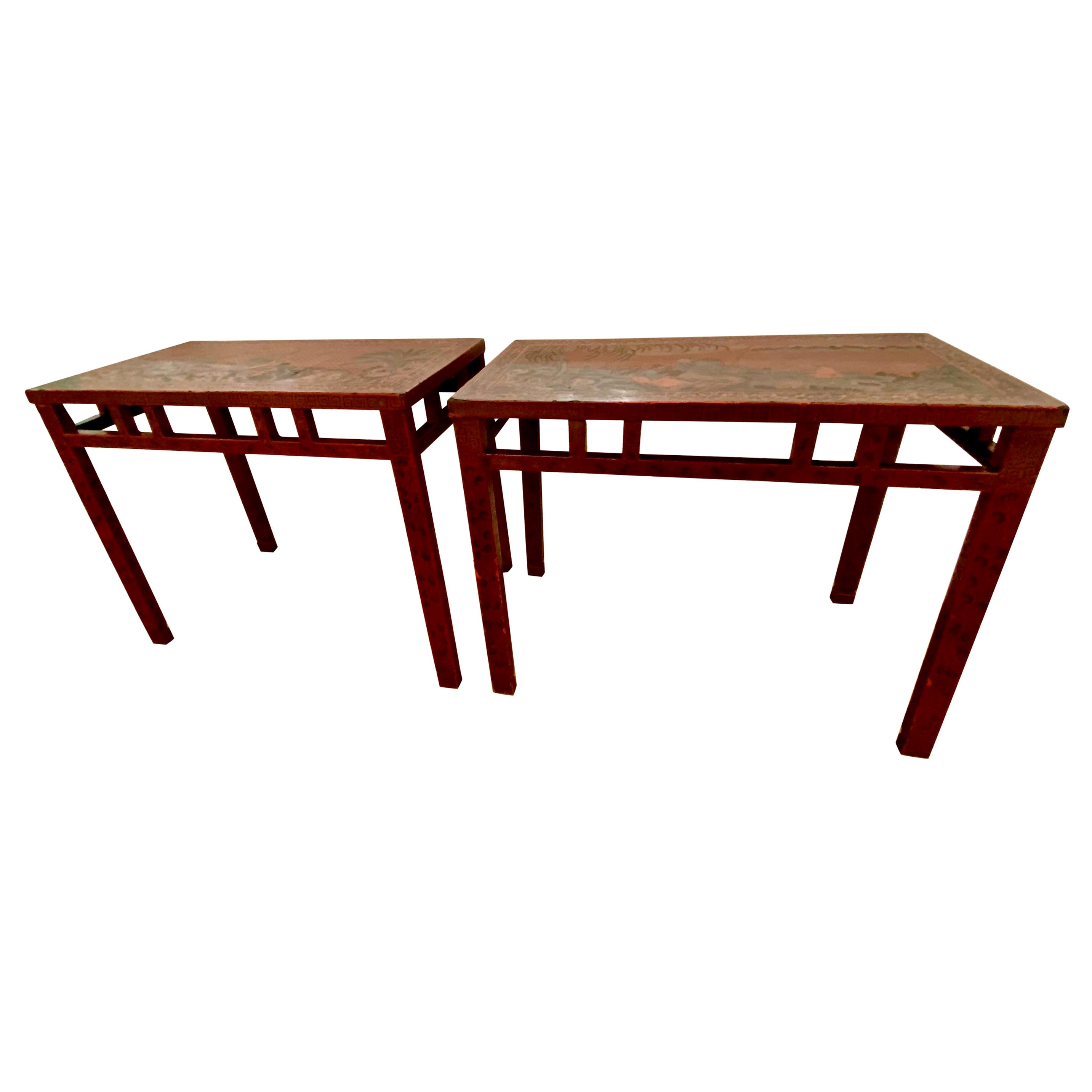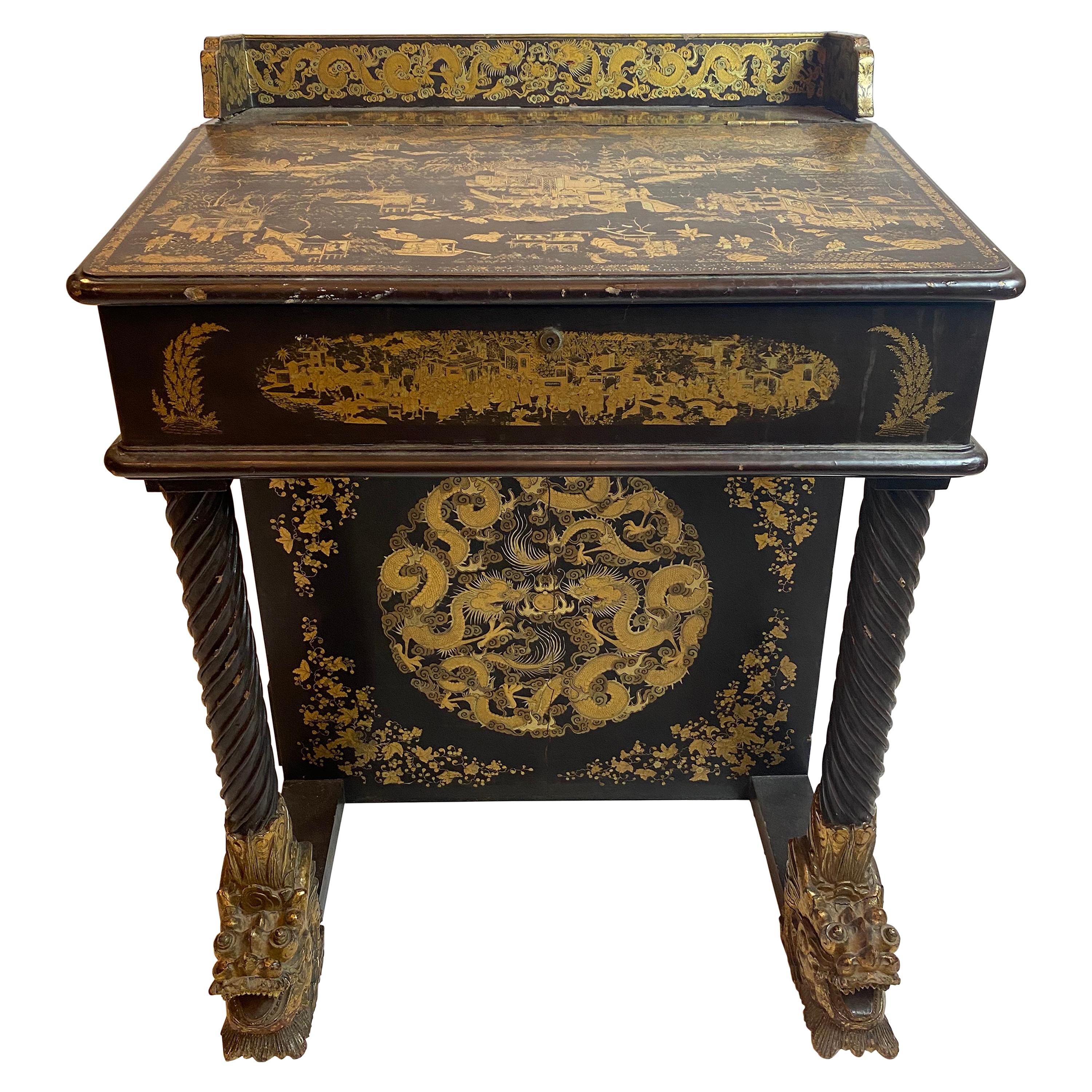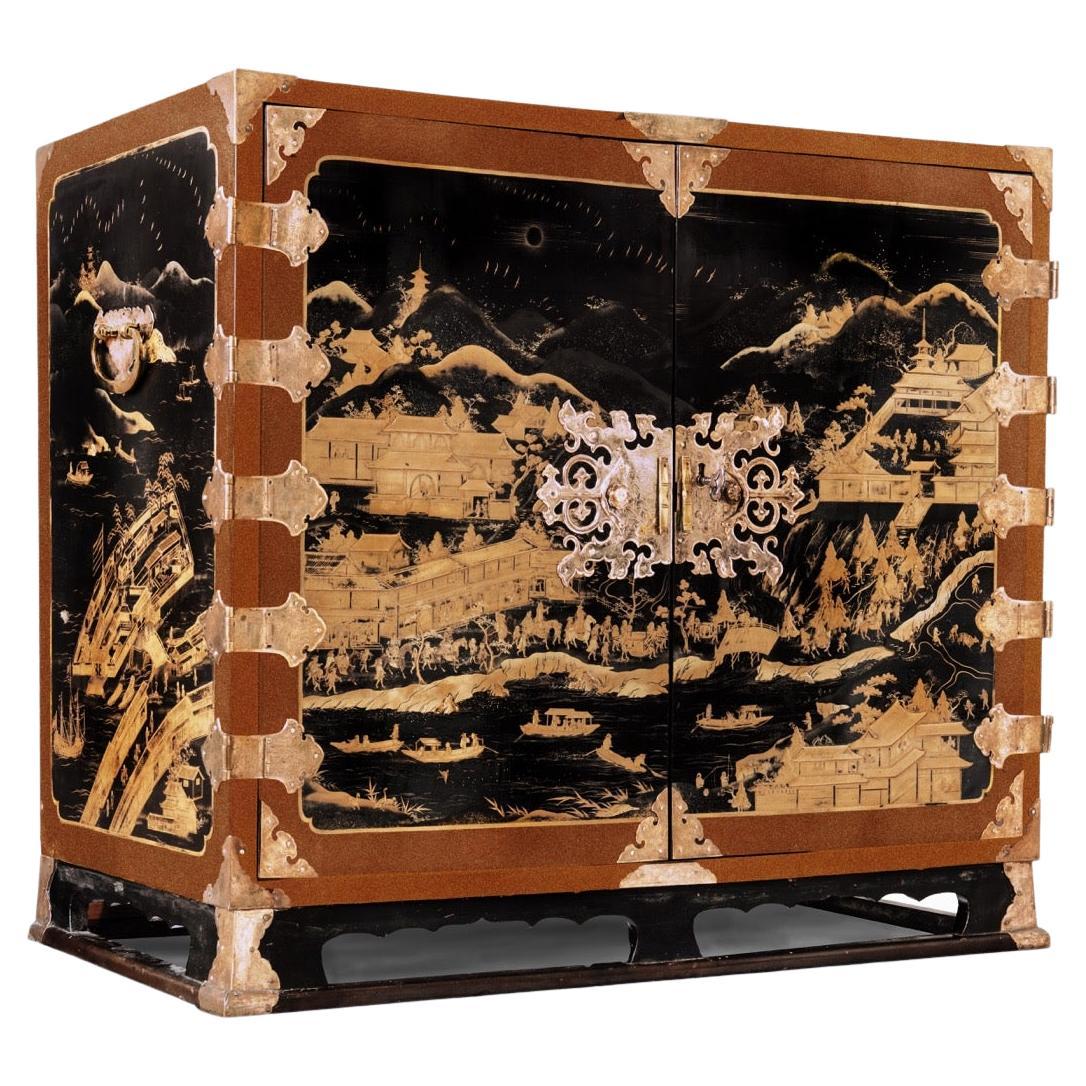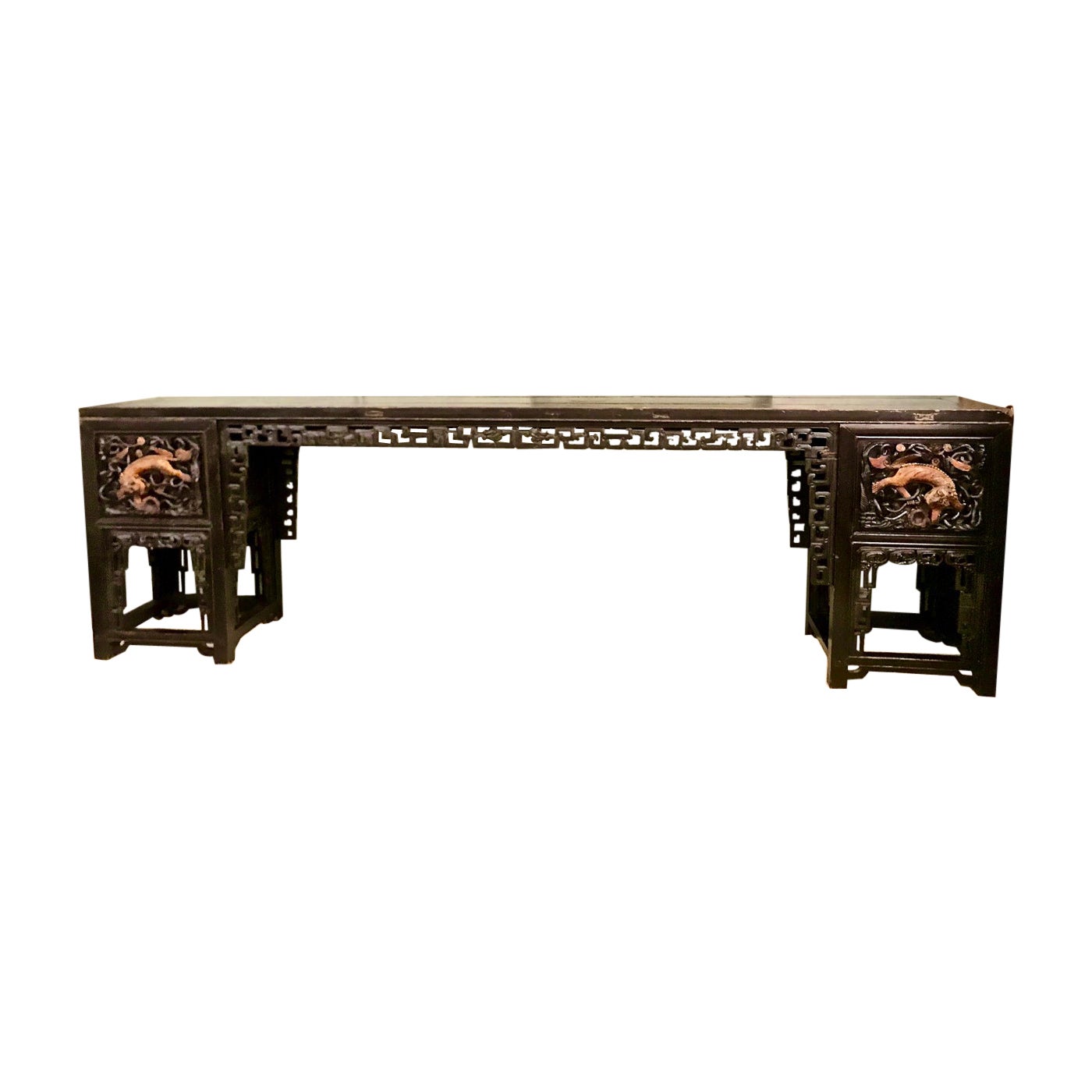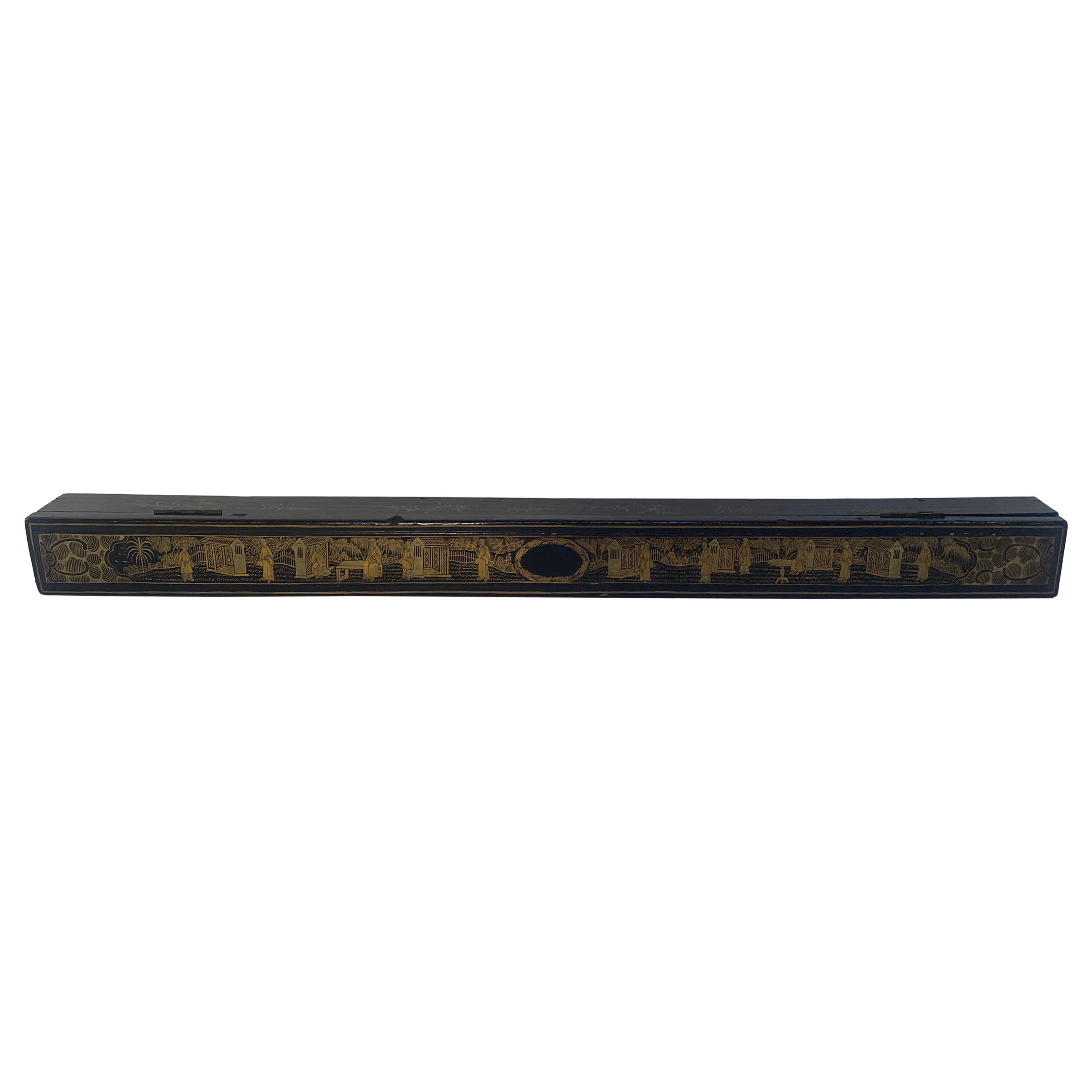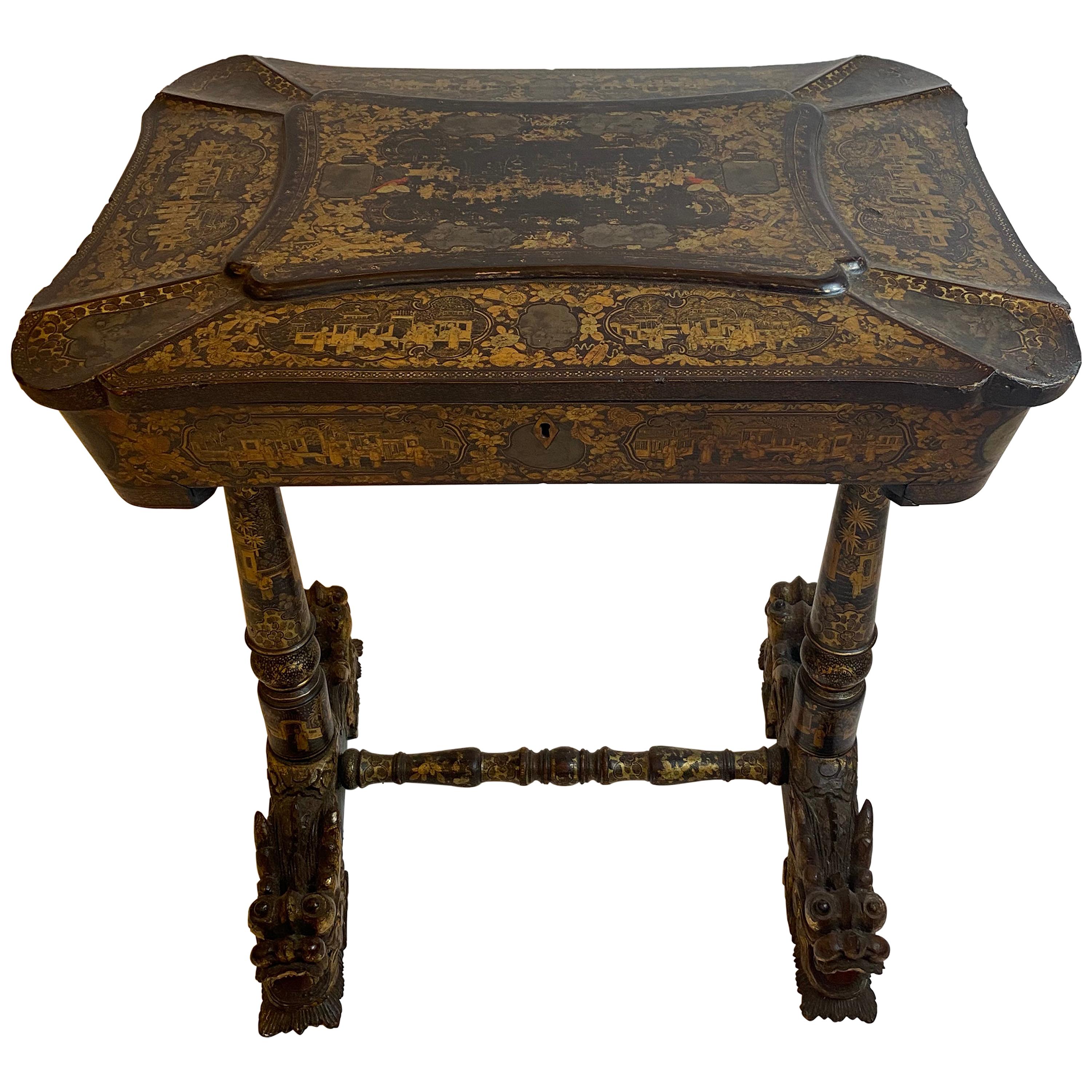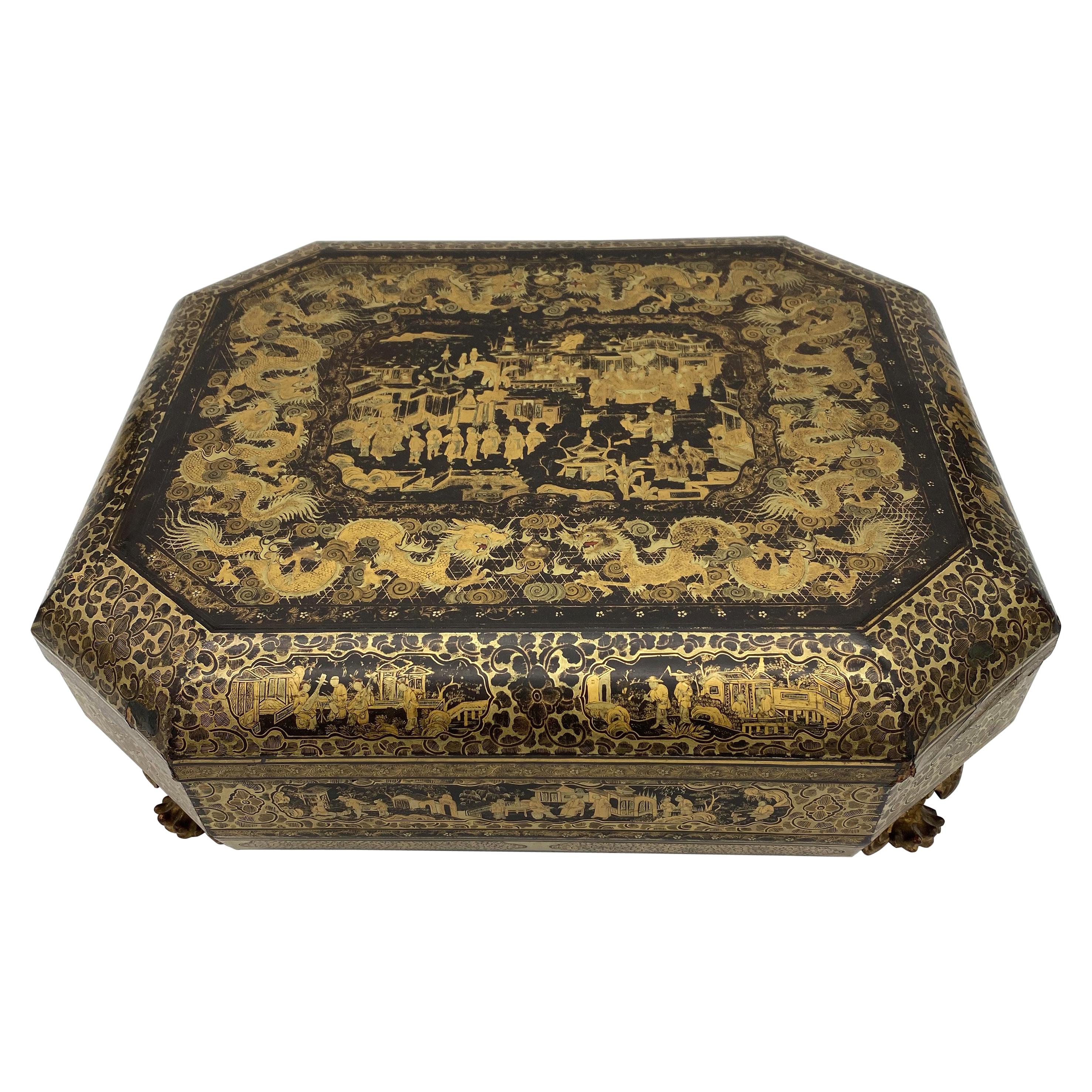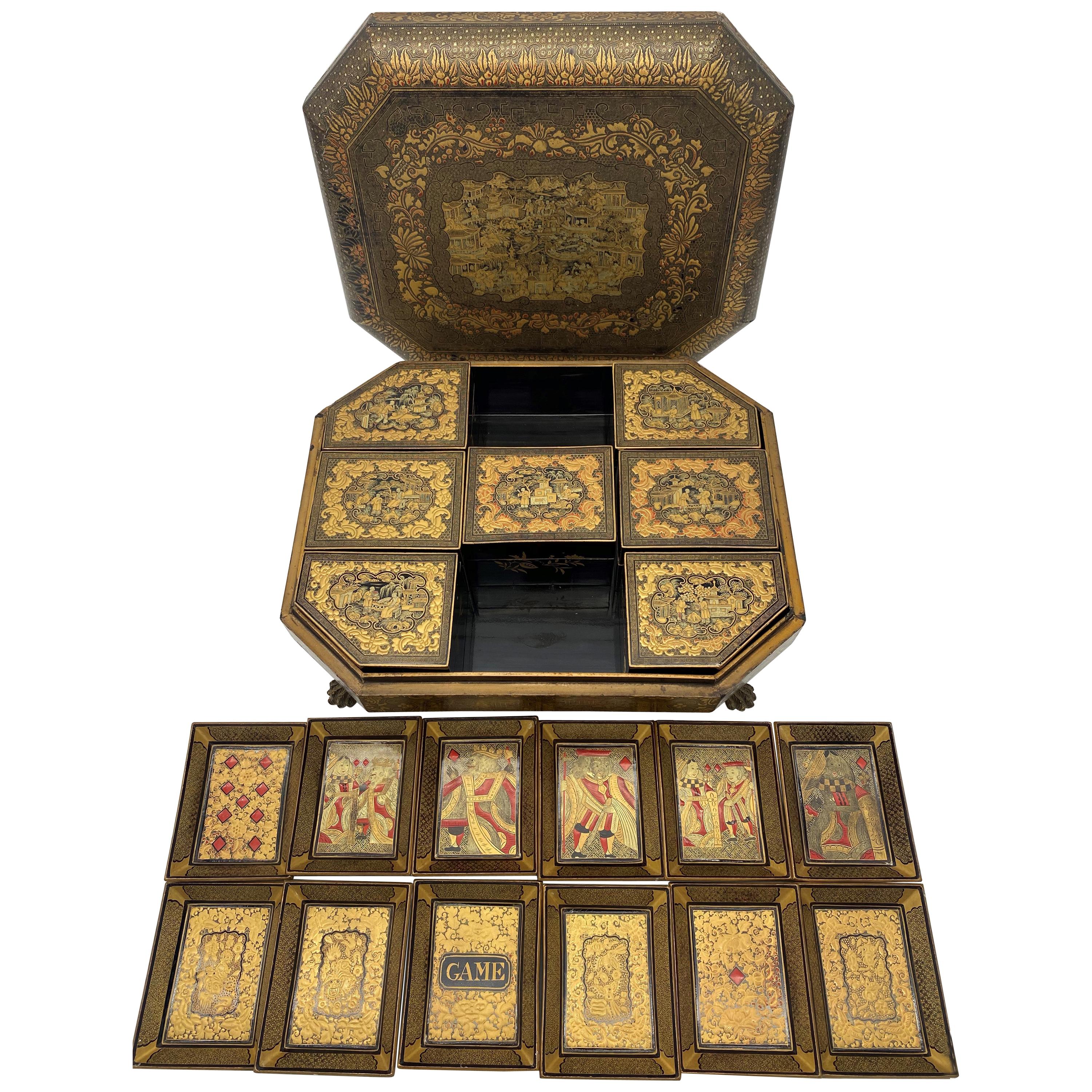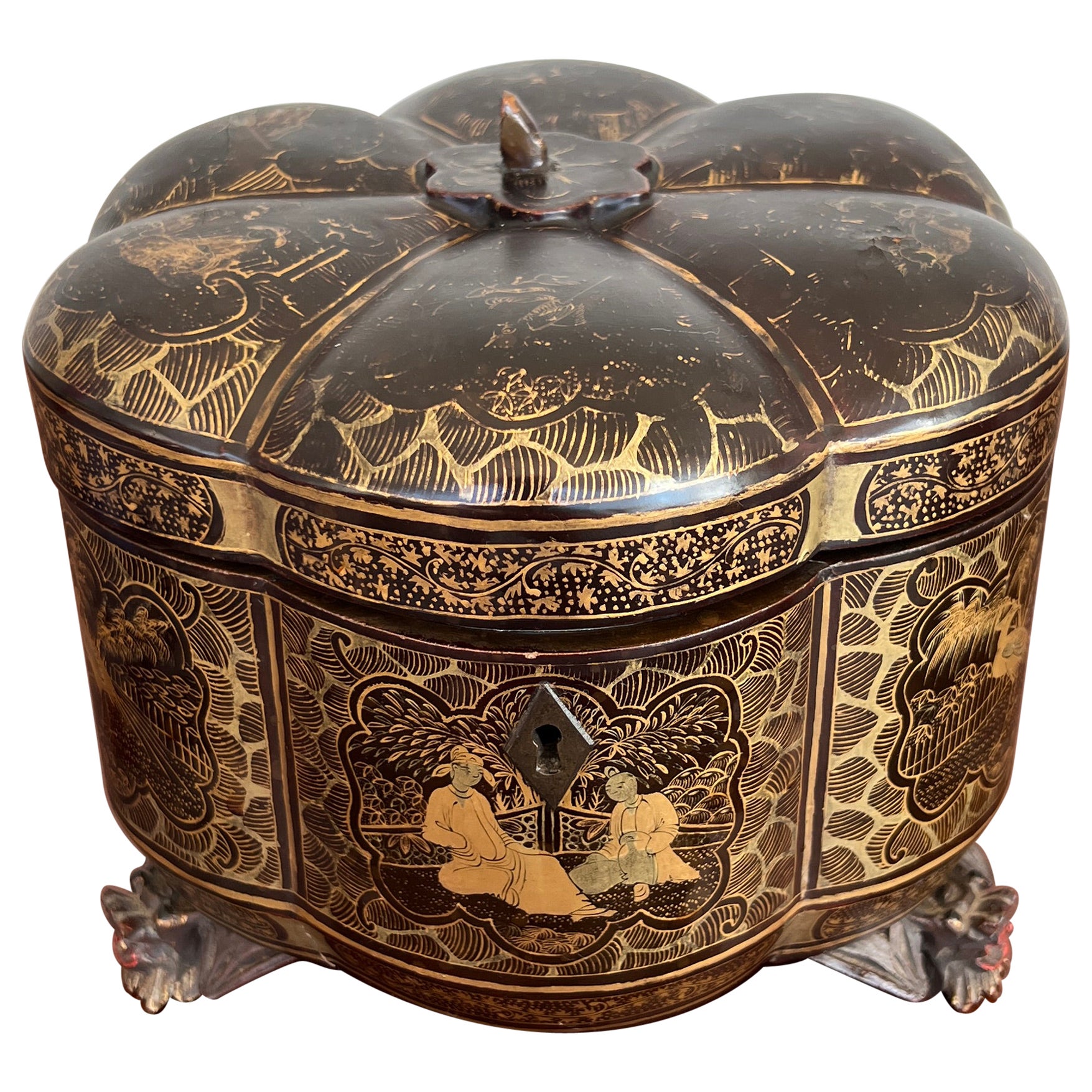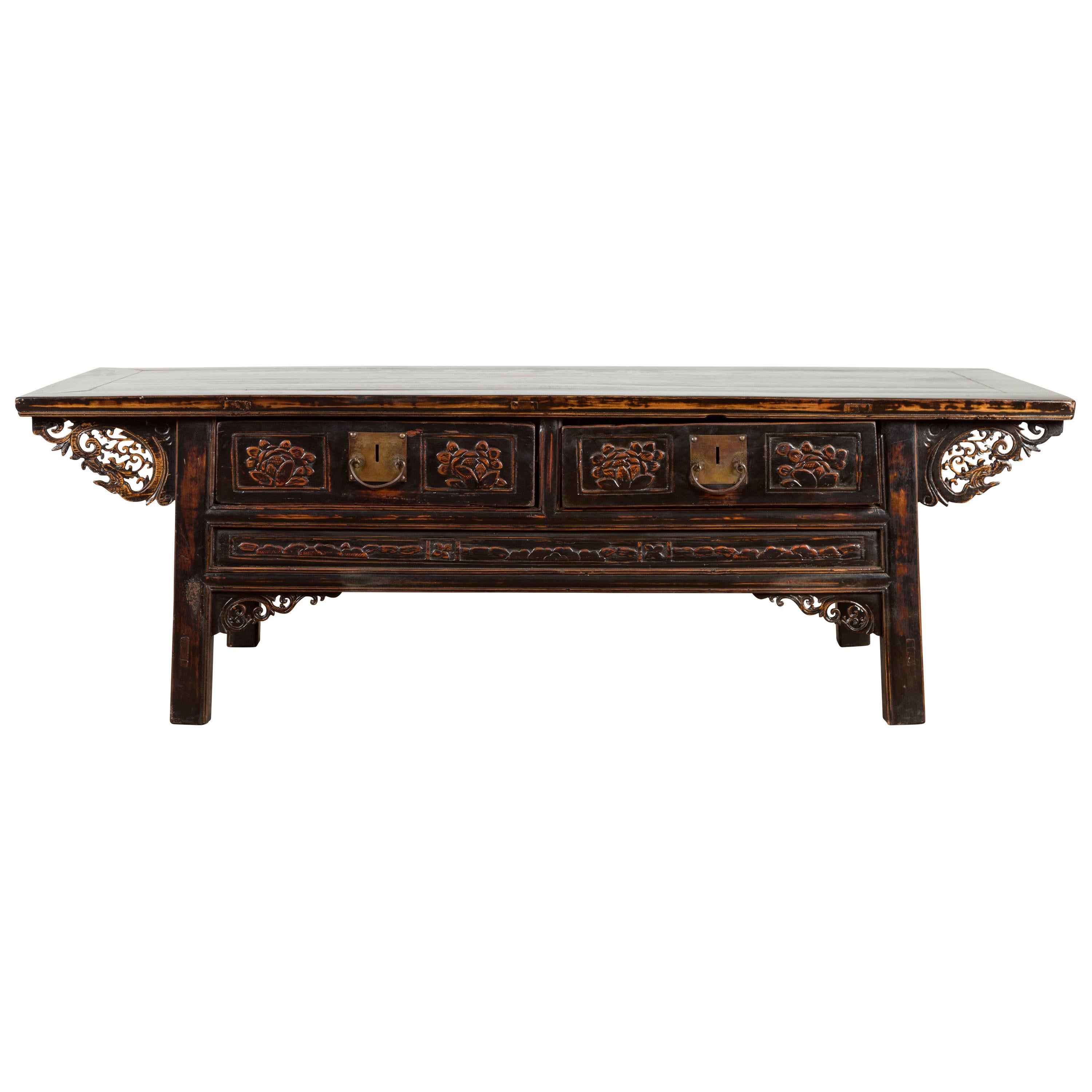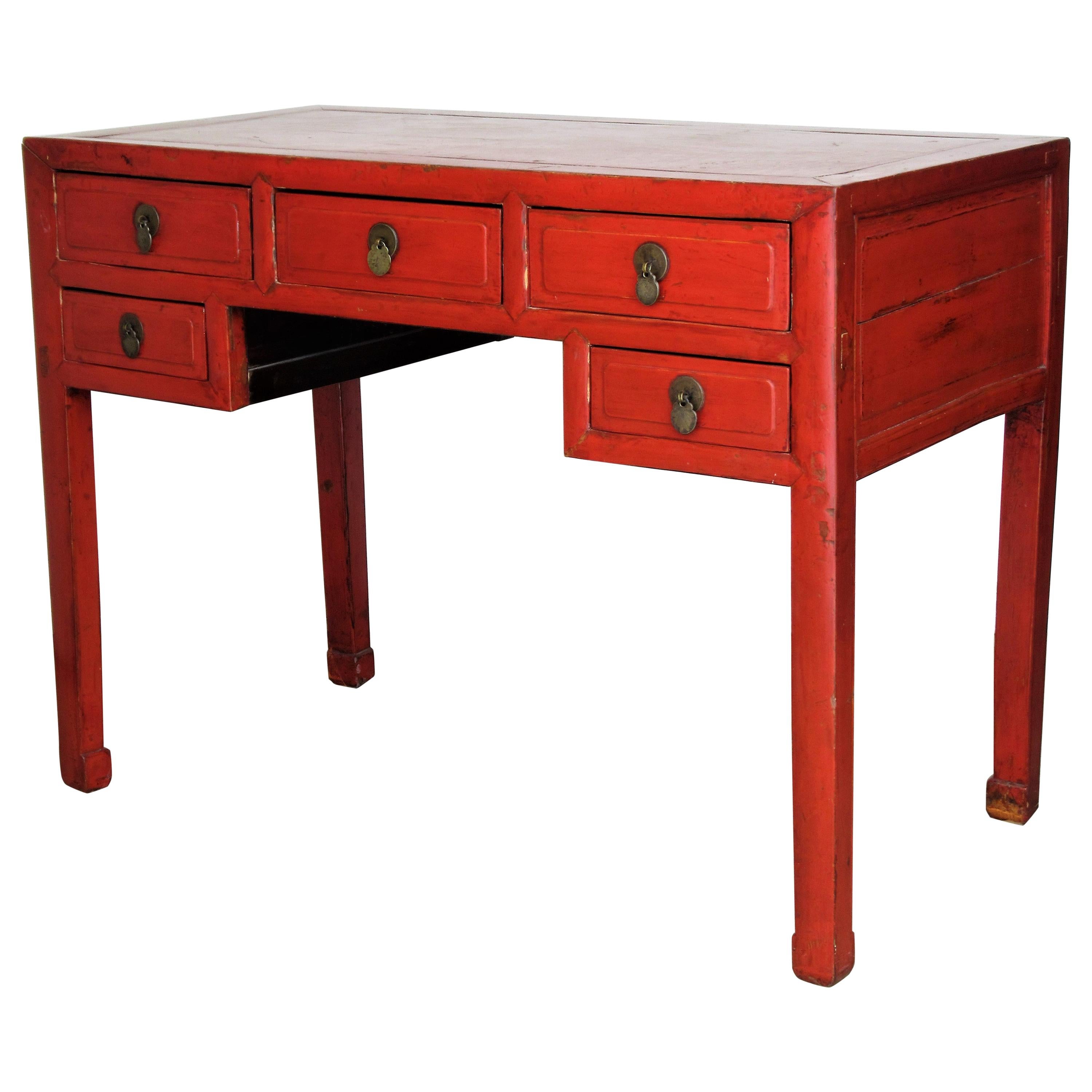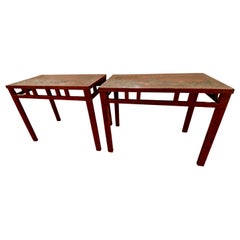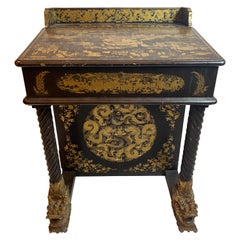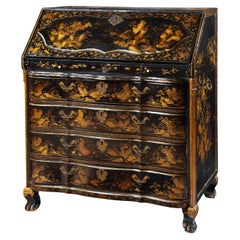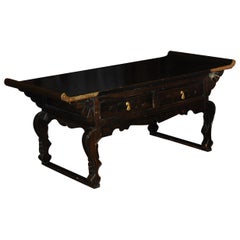
19th Century Black Lacquered Low Chinese Export Altar Table with Two Drawers
View Similar Items
1 of 5
19th Century Black Lacquered Low Chinese Export Altar Table with Two Drawers
About the Item
- Dimensions:Height: 14.97 in (38 cm)Width: 33.86 in (86 cm)Depth: 13.39 in (34 cm)
- Style:Chinese Export (Of the Period)
- Materials and Techniques:
- Place of Origin:
- Period:
- Date of Manufacture:circa 1800s
- Condition:Wear consistent with age and use. Minor losses. Minor fading.
- Seller Location:High Wycombe, GB
- Reference Number:1stDibs: LU4899216699571
You May Also Like
- Chinese Altar Tables, 19th C. LacquerLocated in Pasadena, CAThis is an unusual pair of Late Ching Chinese cinnabar-toned coromandel lacquer small altar or side tables. The tops of the tables feature complementary incised and painted scenes from Chinese every day life. Both tables are in very good condition considering their 100+ years of use. It is unusual to find a pair of coromandel incised lacquer...Category
Antique Mid-19th Century Chinese Chinese Export Lacquer
MaterialsWood, Lacquer
$3,815 Sale Price / set30% Off - 19th Century Chinese Export Lacquer and Gilt Davenport DeskLocated in Brea, CAEarly 19th century Chinese export lacquer and gilt Davenport desk, the entire finely decorated with the typical figural landscape and foliate gilt decoration, the sloped top opening ...Category
Antique Early 19th Century Chinese Qing Lacquer
MaterialsLacquer
- 18th Century Chinese Export Lacquer Chinoiserie Bureau Desk for the Dutch MarketLocated in Amsterdam, NLAn extremely rare, possibly unique, Chinese export lacquer bureau for the Dutch market Canton, circa 1737 H. 118 x W. 102.5 x D. 63 cm Provenance: - Private collection, The Netherlands - J.K. Driessen Antiques, Arnhem (Art Fair Breda, 1989) - Noble collection, Belgium Literature: - C.J.A. Jörg, ’De handel van de V.O.C. in Oosters lakwerk in de 18de eeuw’ in: Nederlands Kunsthistorisch Jaarboek , Jr. 31 (1980), pp. 355-363 (ill.) - Annigje Hofstede, Nederlandse meubelen van Barok tot Biedermeier, 1700-1830, Waanders, Zwolle 2004, pp. 35-37 (ill.) This lacquer bureau is one of the four writing desks purchased in Canton in 1737, and as far as is known, this is the only remaining bureau of its type from the period. As the VOC believed that large pieces of import took up too much valuable space in their trading ships...Category
Antique Mid-18th Century Chinese Chinese Export Lacquer
MaterialsWood, Cypress, Lacquer
$82,457Free Shipping - 17th Century Japanese Export Lacquer Cabinet with Depiction the Dutch TradepostLocated in Amsterdam, NLA highly important Japanese export lacquer cabinet with depiction of the Dutch East India Company tradepost Deshima and the annual Dutch delegation on its way to the Shogun in Edo Edo period, circa 1660-1680 H. 88 x W. 100.5 x D. 54 cm This cabinet includes a later European japanned stand, but also a modern powder-coated steel frame. The latter can be designed and added to your specific needs. The sides and front of the rectangular two-door cabinet are embellished in gold and silver hiramaki-e and takamaki-e on a black roiro lacquer ground with a continuous design. The two doors depict a long procession of numerous figures travelling on foot and horseback along buildings and a pagoda into a mountainous landscape. This is the annual court journey, Hofreis, of the Dutch from Nagasaki to the Shogun’s court in Edo. Three horseback riders are dressed as Dutch merchants and a fourth figure, probably het Opperhoofd, is seen inside a palanquin, norimon. Just about to cross the bridge, two men are carrying a cabinet like the present one. Many Japanese figures on either side of the procession are engaged in various activities; some play musical instruments on board of small boats, others are fishing; figures inside buildings are depicted playing go, and farmers are tending to their rice paddocks. The upper part of the right door shows a large mansion, probably the local daimyo’s castle, with men kneeling before a man in the central courtyard. The court journey fits in with the foreign policy of the shogunate which accorded a role to the VOC alongside China, Korea, and the Ryukyu Islands who also had to pay tribute. However, the VOC employees were traders, having low status in Japan’s social hierarchy, and they were received with less deference than were the state embassies from Korea and the Ryukyu Islands. Nevertheless, the contacts with the Dutch were a welcome source of information to the Shogun about Europe and European science and technology. The left side of the cabinet depicts, in mirror image, a rare view of the artificial fan-shaped Deshima Island, the trading post for the Dutch in Japan. The island, where the Dutch flag flies, is surrounded by small Japanese boats and an anchored three-masted fluyt (cargo ship), flying Dutch flags, with on the stern the VOC monogram. On the bottom right a busy street of Nagasaki is shown, bordered by shops and leading up to the stone bridge. On the island the trees are beautifully painted, two cows can be seen, and the flagpole, all in very fine detail. Dutchmen and enslaved Malay are visible outside the buildings and two Japanese figures, probably guards, sit in a small hut in the centre. A maximum of fifteen to twenty Dutchmen lived on the island at any time and soldiers or women were not allowed. Restrictions on Deshima were tight, and the merchants were only allowed to leave the island by special permission. The Opperhoofd had to be replaced every year, and each new Opperhoofd had to make a court journey to pay tribute, present gifts, and to obtain permission to Margaret Barclay eep on trading. In the distance, many birds fly above the hills and a four-story pagoda can be seen. The right side of the cabinet is painted with other horse riders and their retinue journeying through mountains. The pair of doors to the front open to reveal ten rectangular drawers. The drawers are decorated with scenes of birds in flight and landscapes with trees and plants. The reverse of the left door with two thatched buildings, one with a ladder, underneath a camelia tree with large blooms; the right door with a three-story pagoda nestled among trees and both doors with a flying phoenix, ho-oo bird. The cabinet, with elaborately engraved gilt copper mounts, hinges, lock plates and brass handles, is raised on an 18th-century English japanned wood stand. A pair of large cabinets...Category
Antique 17th Century Japanese Edo Lacquer
MaterialsCopper, Gold
$1,374,292Free Shipping - Chinese Altar Table, 19th CenturyLocated in Pasadena, CAThis is a stunning and long Chinese altar table that measures a full 10 ft. in length with carved end pedestals featuring high relief buddhist...Category
Antique 1850s Chinese Chinese Export Furniture
MaterialsElm
$4,360 Sale Price20% Off - Early 19th Century Long Chinese Export Black Lacquer Box with a Walking StickLocated in Brea, CAEarly 19th century Chinese export lacquer and gilt box with a walking stick from the Qing dynasty, bone walking stick in black lacquered wood box, w...Category
Antique Mid-19th Century Chinese Qing Lacquer
MaterialsLacquer
Recently Viewed
View AllMore Ways To Browse
Chinese Altar Table Low
Low Altar Table
Tsugaru Nuri
Vintage Presentation Kimono
Antique Chinese Baby Bath
Antique Tiffin Box
Lacquered R Wardrobe
Qing Chinese Lacquerware Ink Box
Straits Altar
Cinnabar Plate
Japanese Suzuribako
Namban Lacquer
Japanese Bento
Japanese Wall Mother Of Pearl
Black Lacquer Mother Of Pearl Wall Art
Chinese Lacquer Sewing Table
Chinese Export Lacquer Chess
Japanese Inlaid Plaque
